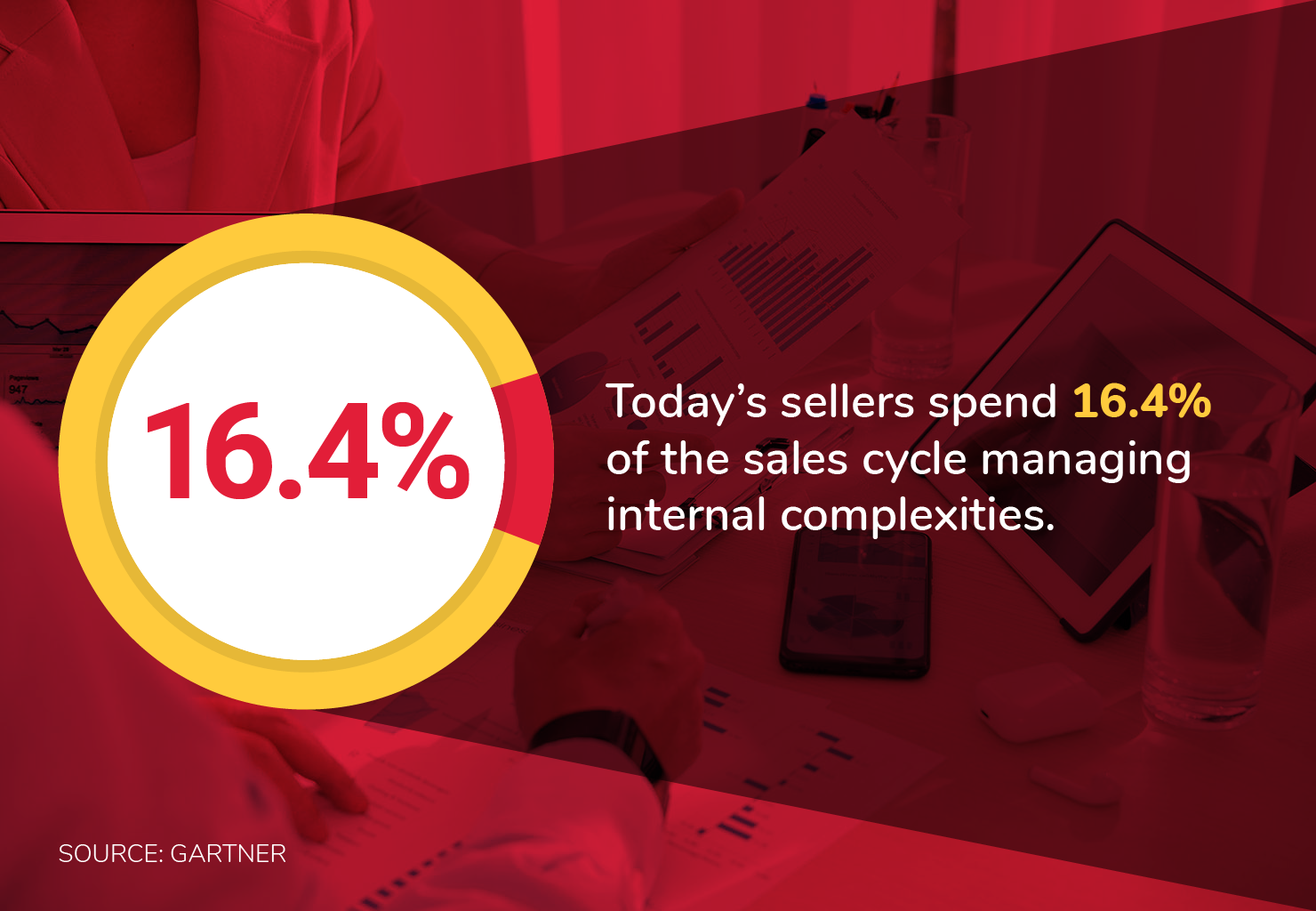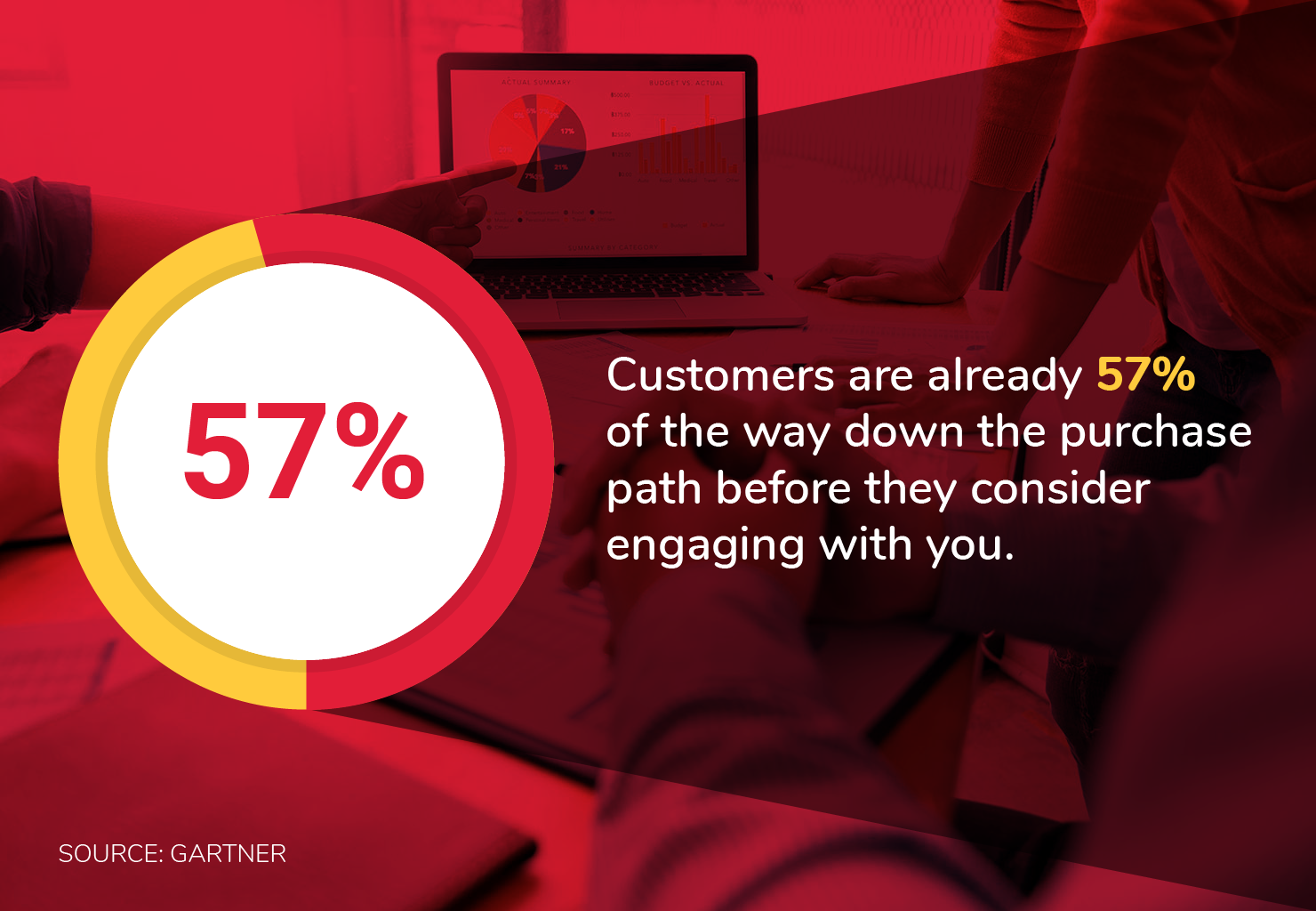Digital Engagement, Increased Connectivity
In a world where access to information is instantaneous through an electronic device that fits in the palm of your hand, the sales cycle for a building materials manufacturer follows an entirely different set of rules than it did years ago.
Consider this: According to Gartner, a leading consulting and research firm, prospects are 57 percent of the way down a purchasing path before they decide to directly engage with your brand. That means they have completed more than half that journey on their own by conducting online searches, reviewing materials on your website, assessing competitors, following you on social media, and more. They have charted their own self-guided digital journey and have already made certain decisions about your product offerings based on their research and due diligence.
This also means that sales professionals no longer lead the selling journey. In today’s digital world, your sales team should focus on the later steps in the process, and they need to be armed with the right tools and information to support the buyer.
The practice is known as sales enablement. When executed effectively, your building materials brand will build stronger levels of confidence with your customers and achieve higher win rates.

The same study from Gartner reports that sellers must spend 16.4 percent of the buyer’s journey managing internal complexities. That means increasing efficiency is paramount, and it requires removing the sometimes invisible but most certainly tangible barrier between the sales and marketing functions. Both teams should establish rigor to constantly collaborate in a transparent and seamless manner in the management and support of all aspects of the buying journey. Sales and marketing objectives, planning, and execution must always be intertwined.
Consider these top five strategies to optimize your sales process, take advantage of a buyer’s digital journey, and increase your win rates:
- Establish Clear and Coordinated Objectives: Many businesses continue to manage marketing objectives separate of sales objectives in their annual business planning. To effectively execute sales enablement in your business, the two must be synergistic. Ensure both disciplines have access to real-time insight into how prospects and clients are engaging with the brand and the products. Properly defined objectives can also help determine marketing qualified leads (MQLs) and sales qualified leads (SQLs) through established lead scoring strategies.
- Create an Interconnected Digital Ecosystem: Smart building products brands invest in the right digital tools – from a smartly designed website that is informative and intuitive to marketing automation and a customer relationship management (CRM) platform. Make sure these tools are interconnected, can talk to each other, and can deliver insights that are timely and impactful. You can even connect these systems with asset management and ERP platforms for more robust data. You are then making informed decisions on both marketing and sales fronts.
- Craft and Deliver High-Quality Content: Ensure that your brand is telling a compelling story about your products and innovations. Your content marketing assets should take on a variety of forms for effective audience engagement – blog posts, infographics, white papers, case studies, 3D illustrations, product specifications, and more. Build a content marketing ecosystem that is designed to serve prospects and customers throughout the buying journey – from initial introduction, to qualification, to final sale and post-sale interaction. Allow these assets to fuel your marketing and sales automation programs to drive greater conversion.
- Create an Evergreen Sales Training Program: Sales training can no longer happen only once a year. To effectively manage a sales enablement platform, marketing and sales training must be ongoing and consistent throughout the year. Provide your building products sales team with ready access to the resources available to the buyer. Train them on individual buyer behavior and how to use the tools and technology available to them as sales professionals so they can sell better and sell more.
- Measure and Optimize: Agility is the key in orchestrating the buying process. It is critical to track the journey your prospects take and analyze it to determine what modifications are necessary. Develop and analyze the right kinds of dashboards and scoring strategies that measure levels of engagement. Track everything from prospect scoring to pipeline performance to win rates. Make sure you are delineating between MQLs and SQLs. Ensure your marketing and sales playbooks align with the metrics you are tracking, and change and adjust as the process evolves.
Sales enablement requires an investment of time and resources and the willingness to initiate course corrections based on constant analysis of performance.
Adopt these strategies, and you will deliver a more enriching experience and a more seamless buying journey for your prospects. You will also drive greater engagement for the brand, greater awareness for your building products, and more business.
Let’s talk.
Have a specific marketing challenge? Looking for a new agency?
We’d love to hear from you.
